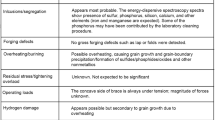Abstract
Dependability evaluation is an important, mandatory step in designing and analyzing critical systems. Indeed, in critical systems, it is necessary to take into account not only operational or functional (static) relationships among components, but also non-functional, dynamic ones such as interferences or dependencies. They could be either internal, if arising from interactions among components, or external, if due to the external environment. To properly evaluate critical system dependability, accurate models are therefore required, able to deal with dynamic, dependent behaviors, especially if the system is complex. The main goal of this paper is to identify and specify the dynamic-dependent aspects that can affect the dependability of a critical system. Starting from the concept of dependence at the basis of system decomposition, an analytic framework and some of the most important dynamic-dependent aspects and behaviors are characterized in terms of dynamic reliability.

Similar content being viewed by others
References
Avizienis A, Laprie J-C, Randell B, Landwehr C (2004) Basic concepts and taxonomy of dependable and secure computing. IEEE Trans Dependable Secur Comput 1:11–33. doi:10.1109/TDSC.2004.2
Barlow RE, Proschan F (1965) Mathematical theory of reliability. Classics in Applied Mathematics. Wiley, New York
Bolch G, Greiner S, de Meer H, Trivedi KS (2006) Queueing networks and Markov chains: modeling and performance evaluation with computer science applications, 2nd edn. Wiley-Interscience, Hoboken, NJ
Bouissou M, Bonc J-L (2003) A new formalism that combines advantages of fault-trees and markov models: Boolean logic driven Markov processes. Reliab Eng Syst Saf 82(2):149–163
Bozzano M, Villafiorita A (2010) Design and safety assessment of critical systems. CRC Press (Taylor and Francis), an Auerbach Book
Bruneo D, Distefano S, Longo F, Scarpa M (2010) Qos assessment of ws-bpel processes through non-markovian stochastic petri nets. In: Parallel and distributed processing (IPDPS), 2010 IEEE international symposium on, pp 1–12, IEEE
Chiacchio F, Cacioppo M, D’Urso D, Manno G, Trapani N, Compagno L (2003) A weibull-based compositional approach for hierarchical dynamic fault trees. Reliab Eng Syst Saf 109(0):45–52. doi:10.1016/j.ress.2012.07.005
Cox DR, Smith WL (1961) Queues. Wiley, New York
Distefano S (2009) How to capture dynamic behaviours of dependable systems. IJPEDS 24(2):127–150
Distefano S (2011) The standby engineering: classification and quantification of standby in reliability. Int J Syst Assur Eng Manag 2(4):333–341
Distefano S, Puliafito A (2009) Dependability evaluation with dynamic reliability block diagrams and dynamic fault trees. IEEE Trans Dependable Secur Comput 6(1):4–17
Distefano S, Trivedi KS (2013) Non-markovian state-space models in dependability evaluation. Qual Reliab Eng Int 29(2):225–239
Distefano S, Filieri A, Ghezzi C, Mirandola R (2011) A compositional method for reliability analysis of workflows affected by multiple failure modes. In: Proceedings of the 14th international ACM Sigsoft symposium on component based software engineering, pp 149–158, ACM
Dugan JB, Bavuso S, Boyd M (1992) Dynamic fault tree models for fault tolerant computer systems. IEEE Trans Reliab 41(3):363–377
Feller W (1968) An introduction to probability theory and its applications. Wiley, New York
Ficco M, Daidone A, Coppolino L, Romano L, Bondavalli A (2011) An event correlation approach for fault diagnosis in scada infrastructures. In: Proceedings of the 13th European workshop on dependable computing, EWDC ’11, pp 15–20, New York, NY, USA. ACM. doi:10.1145/1978582.1978586
Finkelstein M (2008) Failure rate modelling for reliability and risk. Springer Series in Reliability Engineering. Springer Verlag, Berlin
Finkelstein MS (1999) Wearing-out of components in a variable environment. Reliab Eng Syst Saf 66(3):235–242. doi:10.1016/S0951-8320(99)00023-X
IEC 61508-4 ed2.0 (2010-04) Functional safety of electrical/electronic/programmable electronic safety-related systems—Part 4: Definitions and abbreviations, International Electrotechnical Commission
Marseguerra M, Zio E (2002) Basics of the MonteCarlo method with application to system reliability. LiLoLe Verlag, Hagen, Germany
Merriam-Webster Dictionary (2012) Merriam-Webster, Incorporated
Naylor AW (1981) On decomposition theory: generalized dependence. Syst Man Cybern IEEE Trans 11(10):699–713. doi:10.1109/TSMC.1981.4308590
Rausand M, Høyland A (2003) System reliability theory: models, statistical methods, and applications, 3rd edn. Wiley-IEE, New York
SAE International (1996) Guidelines for development of civil aircraft and system. http://standards.sae.org/arp4754a/
Sahner R, Trivedi KS, Puliafito A (1996) Performance and reliability analysis of computer systems: an exeample-based approach using the SHARPE software package. Kluwer Academic Publisher, Dordrecht
Vesely WE, Goldberg FF, Roberts NH, Haasl DF (1981) Fault tree handbook. U.S. Nuclear Regulatory Commission, NUREG-0492, Washington, DC
Walter M, Siegle M, Bode A (2008) OpenSESAME—the simple but extensive, structured availability modeling environment. Reliab Eng Syst Saf 93(6):857–873. doi:10.1016/j.ress.2007.03.034
Conflict of interest
The author declares that he has no conflict of interest.
Author information
Authors and Affiliations
Corresponding author
Rights and permissions
About this article
Cite this article
Distefano, S. Dependability assessment of critical systems. J Ambient Intell Human Comput 6, 713–720 (2015). https://doi.org/10.1007/s12652-015-0272-0
Received:
Accepted:
Published:
Issue Date:
DOI: https://doi.org/10.1007/s12652-015-0272-0




